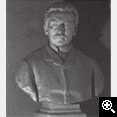|
|
|
| |
| |
Giovanni Curioni
| |
 |
|
was born on 8th December 1831 at Invorio Inferiore (Novara). Curioni graduated in Engineering and Architecture at the University of Turin.
He started his carrier as assistant in Practical Geometry at the Institute for Technical Teaching, that Casati's Law of 1860 turned into Application School for Engineers.
In 1862 he passed the exam as an aggregate doctor in Physical and Mathematic Sciences and in 1865 he was appointed as an assistant at the chair of Constructions at the Application School by the rector
Prospero Richelmy.
In 1864 Curioni was one of the signers of the petition for settling the Society of Engineers and Architects of Turin, of which some years later he became the president. In 1866 he became temporary lecturer of Constructions at the Application School, where he superintended also classes in Drawing.
Contemporaneously, Curioni taught Practical Geometry, Constructions and Estimation at the Professional Institute.
In those years Curioni started drawing up the book L'Arte del fabbricare (The manufacturing art), a work in six volumes which engaged him up to 1885.
In 1868 Curioni became full professor at the Application School for Engineers and left external offices, devoting to create some models for the Cabinet of Construction Science.
From 1879 to 1893 the professor was director of the Science Cabinet for Constructions and the Theory of Bridges. Member since 1873 of the Academy of Sciences of Turin, Curioni showed the Academy some Memories on the resistance and the use of building materials. Within these studies Curioni had installed at the Laboratory of the Application School a large machine to study the resistance of materials, five meters long and two meters high, by which several testing experiments were made up to the 90s, when the reinforced concrete was introduced.
In 1879 Curioni taught also at the Royal Industrial Museum of Turin.
In 1881 he was appointed deputy, as a representative of Borgomanero Board, and one year later at Biella Board.
In 1882 Curioni was also appointed as director of the Application School for Engineers, an office he preserved up to his death, in 1887. As a deputy, he particpated to the discussion on the bill for changing running laws for the superior education, wrestling in order that funds to the Application School for Engineers, the most attended school all over Italy, were increased.
In 1884, in occasion of the national Italian Exhibition of Turin, he published the volume Cenni storici e statistici sulla Scuola di Applicazione per gli Ingegneri fondata in Torino nell'anno 1860 (Historical and statistic hints on the Application School for Engineers in Turin in 1860).
After 1885 Curioni was attacked by malaric fevers and sorrows in the professional field. In fact, Curioni had the unpleasant task to defend himself and his colleagues against criticisms to the Tunneling Project of Giovi, a tunnel for 9 Km approx. which had to take the traffic from Genoa to the Northern Italy and Europe, replacing the old path along Appennines. Works of Tunneling of Giovi had to be lasted from 1882 to 1884 and instead they were still running in 1886, with consequent damages to Ligurian trades.
Curioni died dramatically, suiciding in Turin on 1st February 1887.
|
| |
|
|

